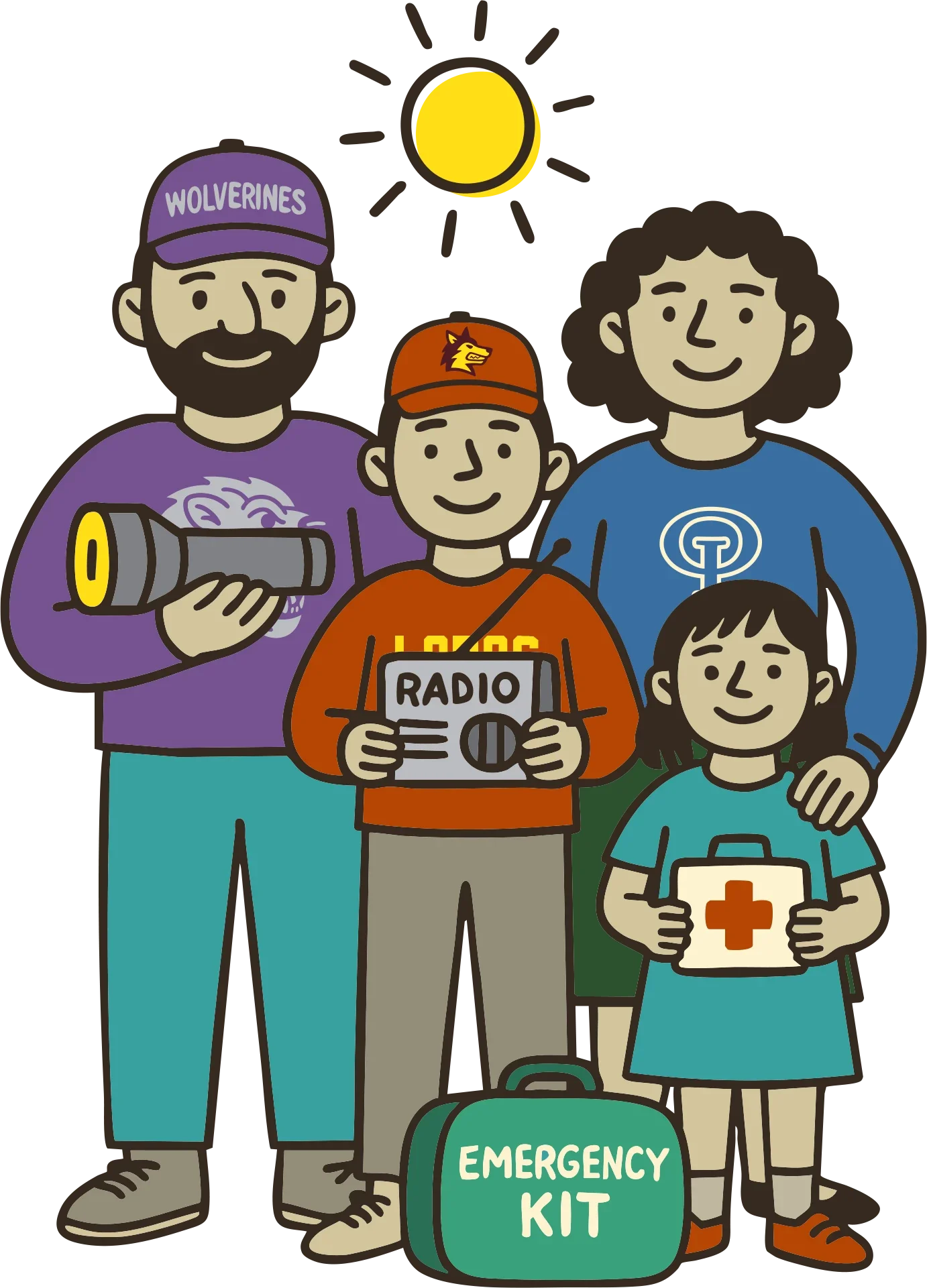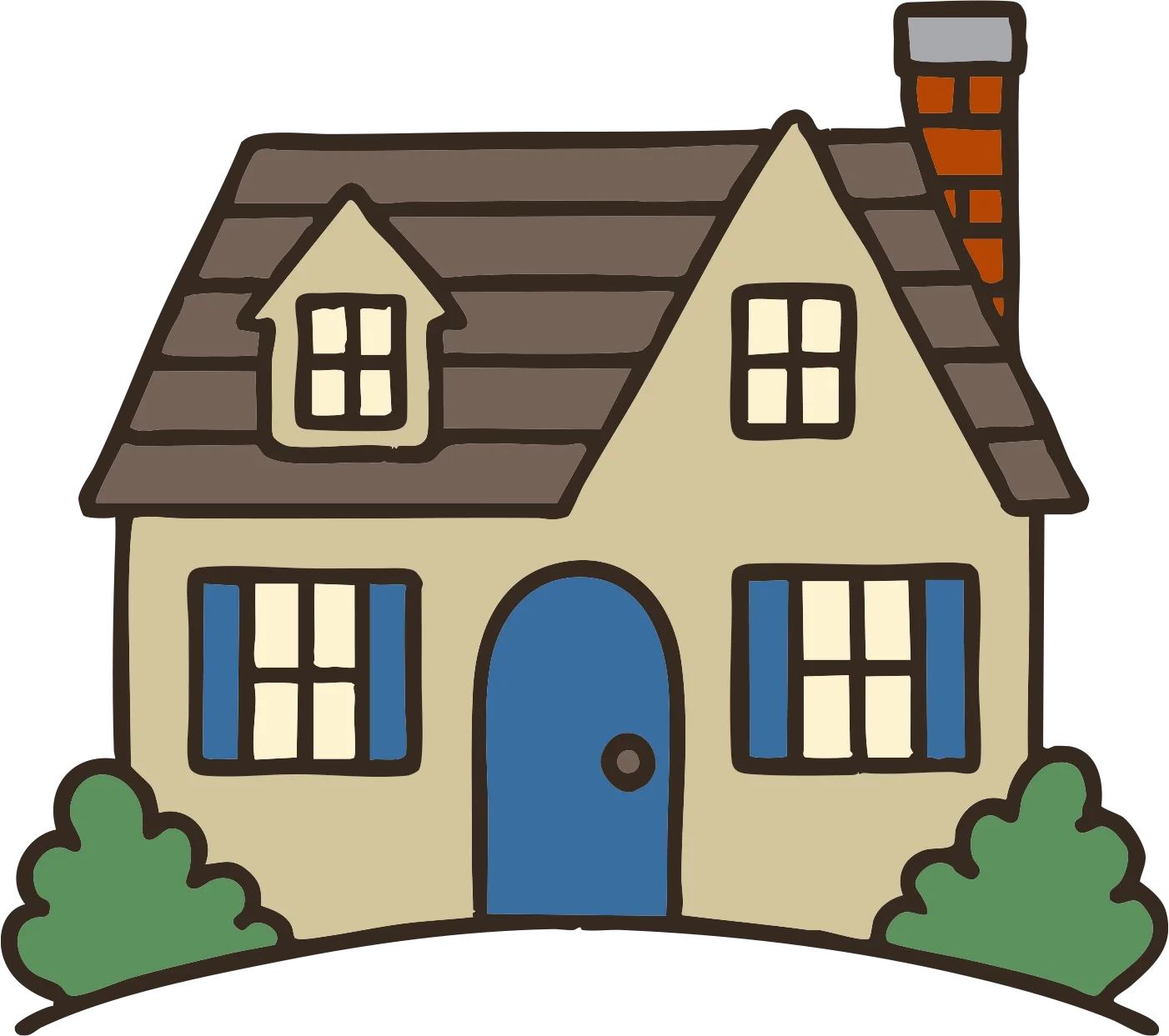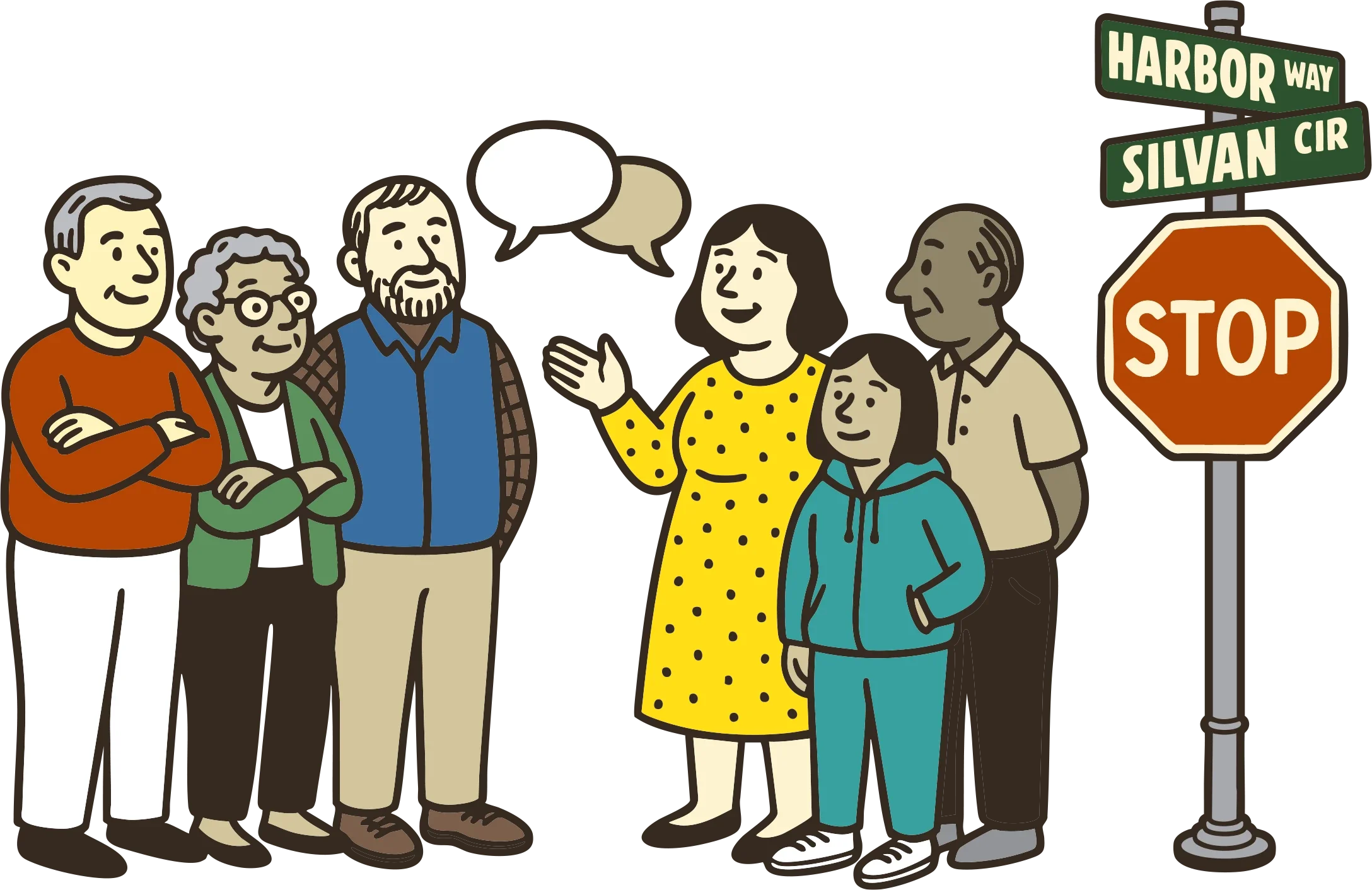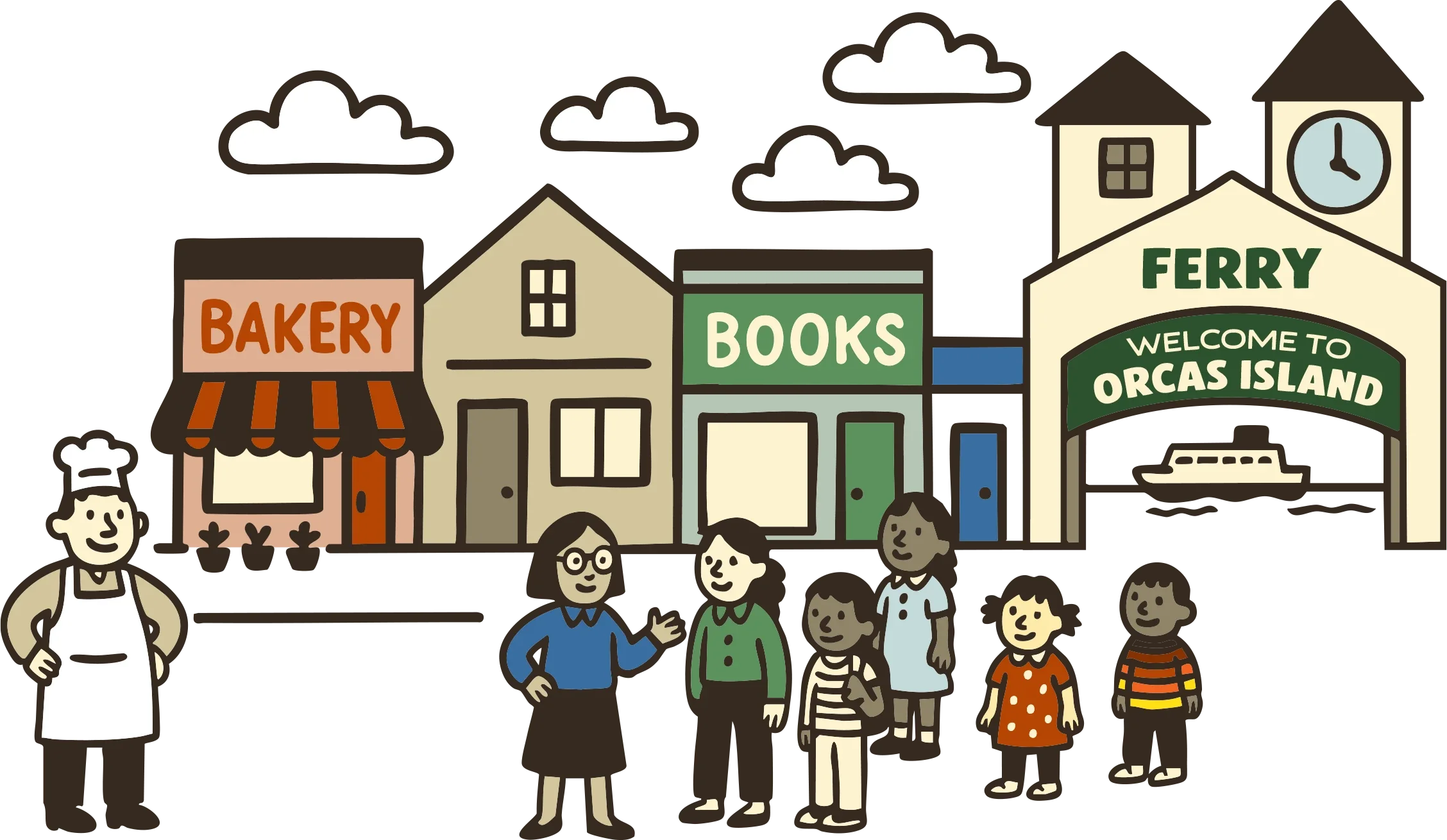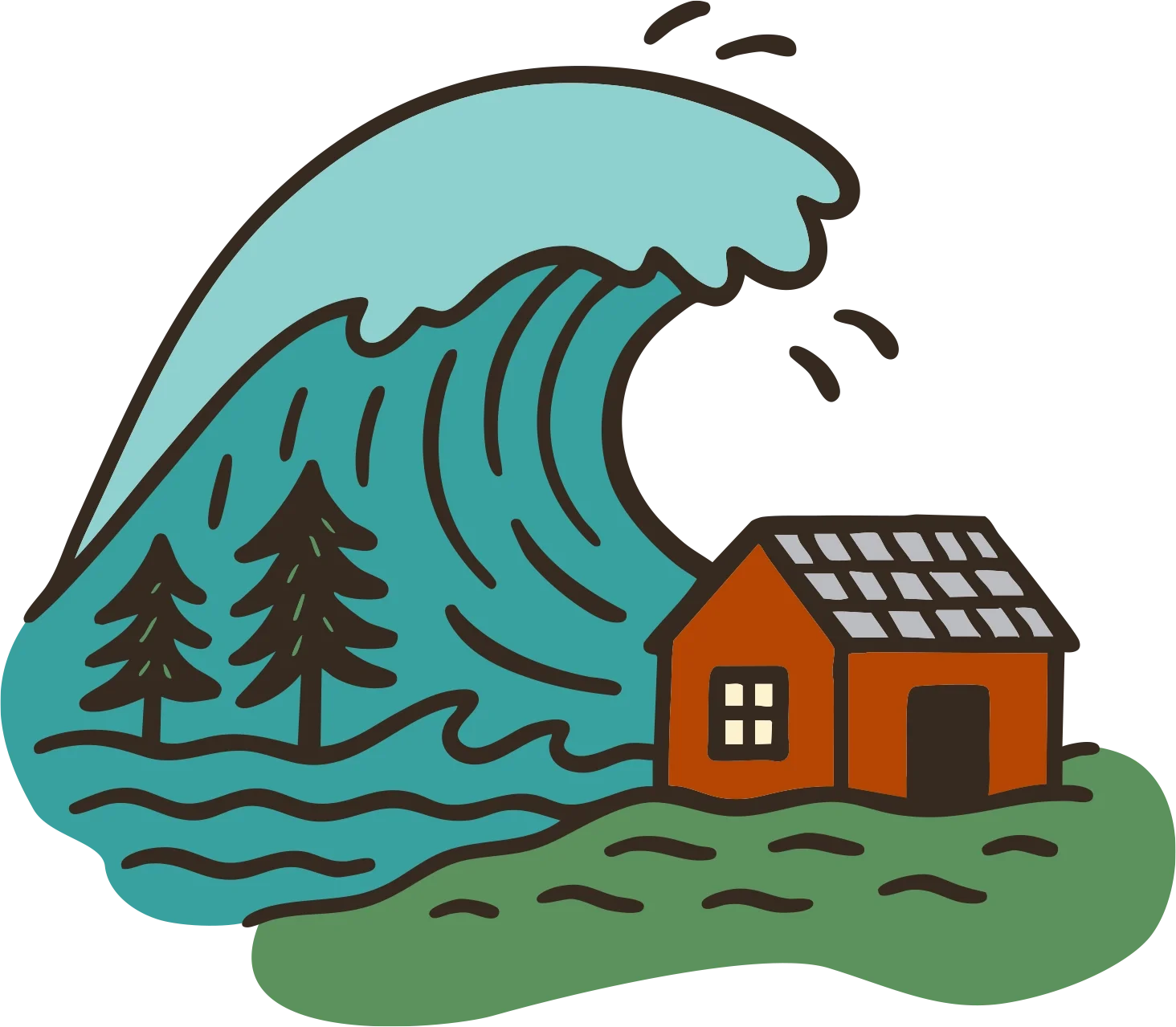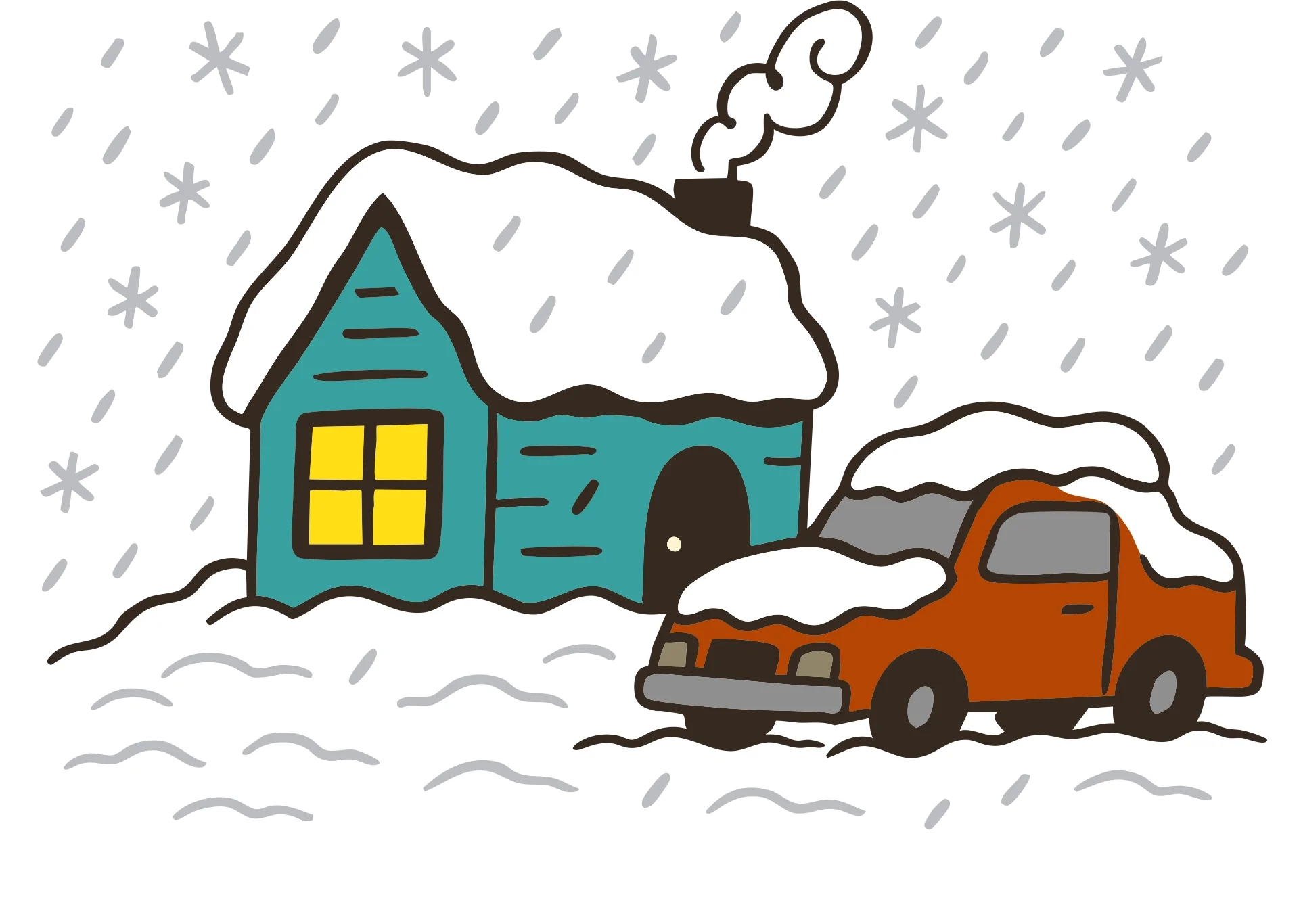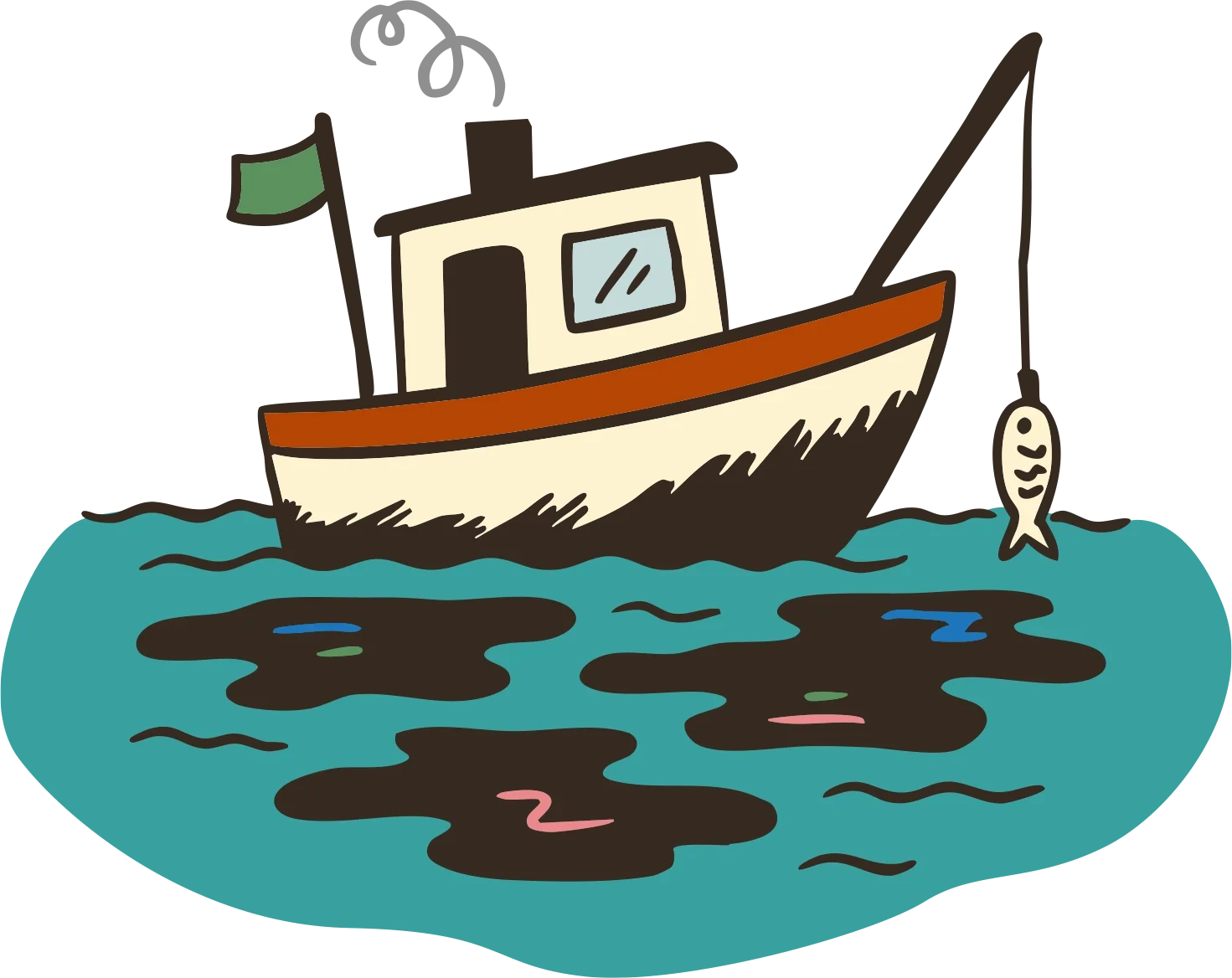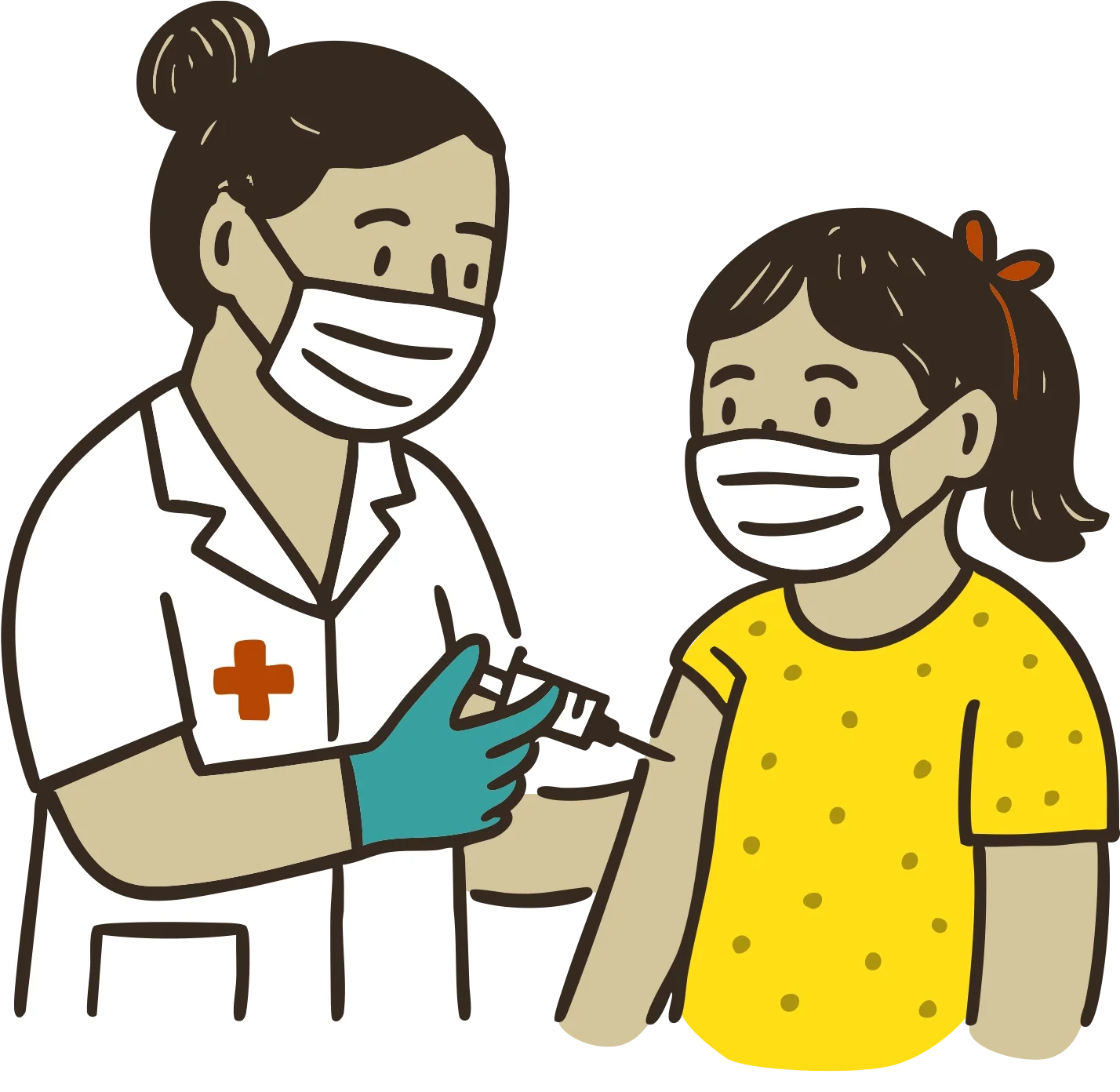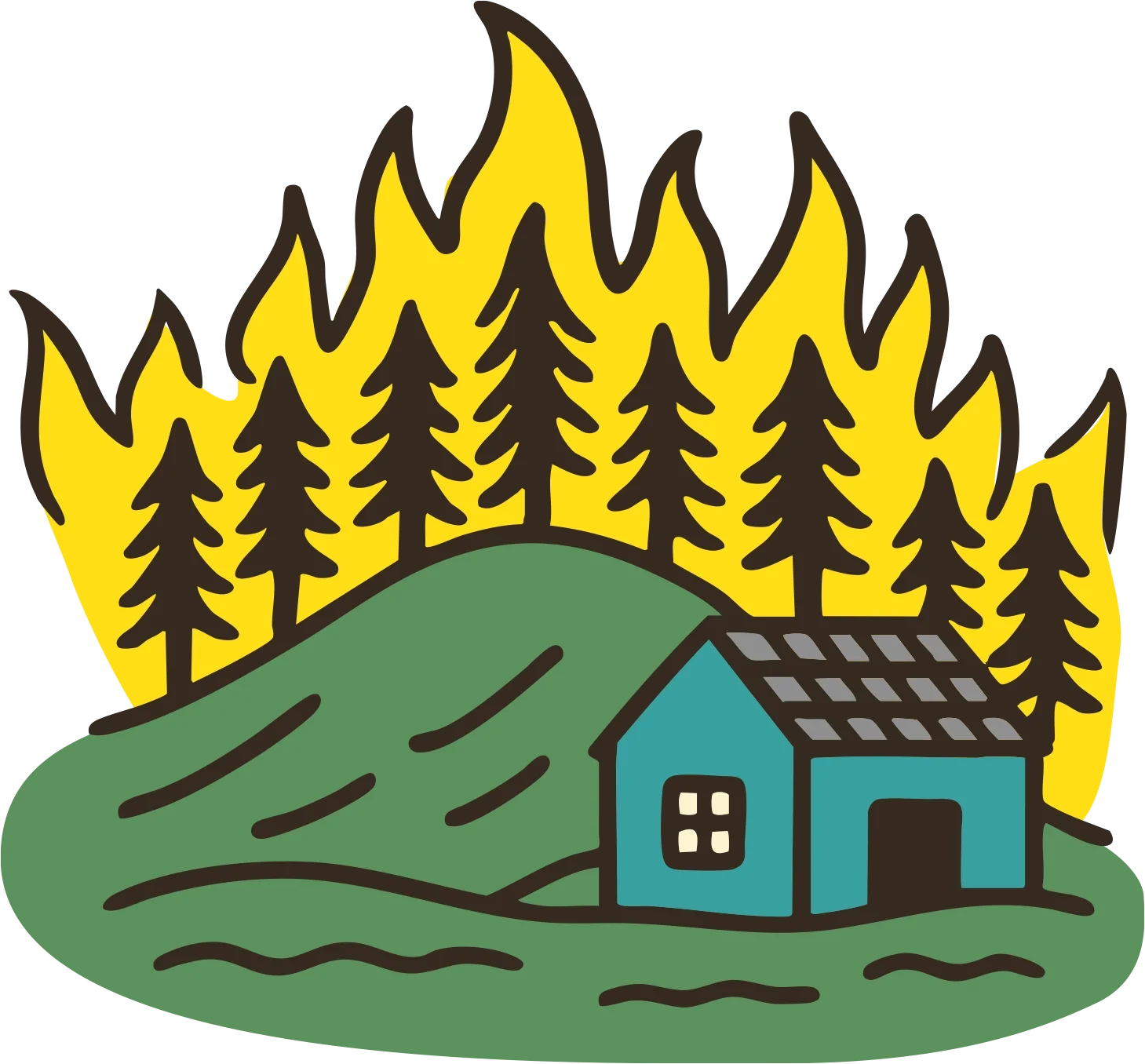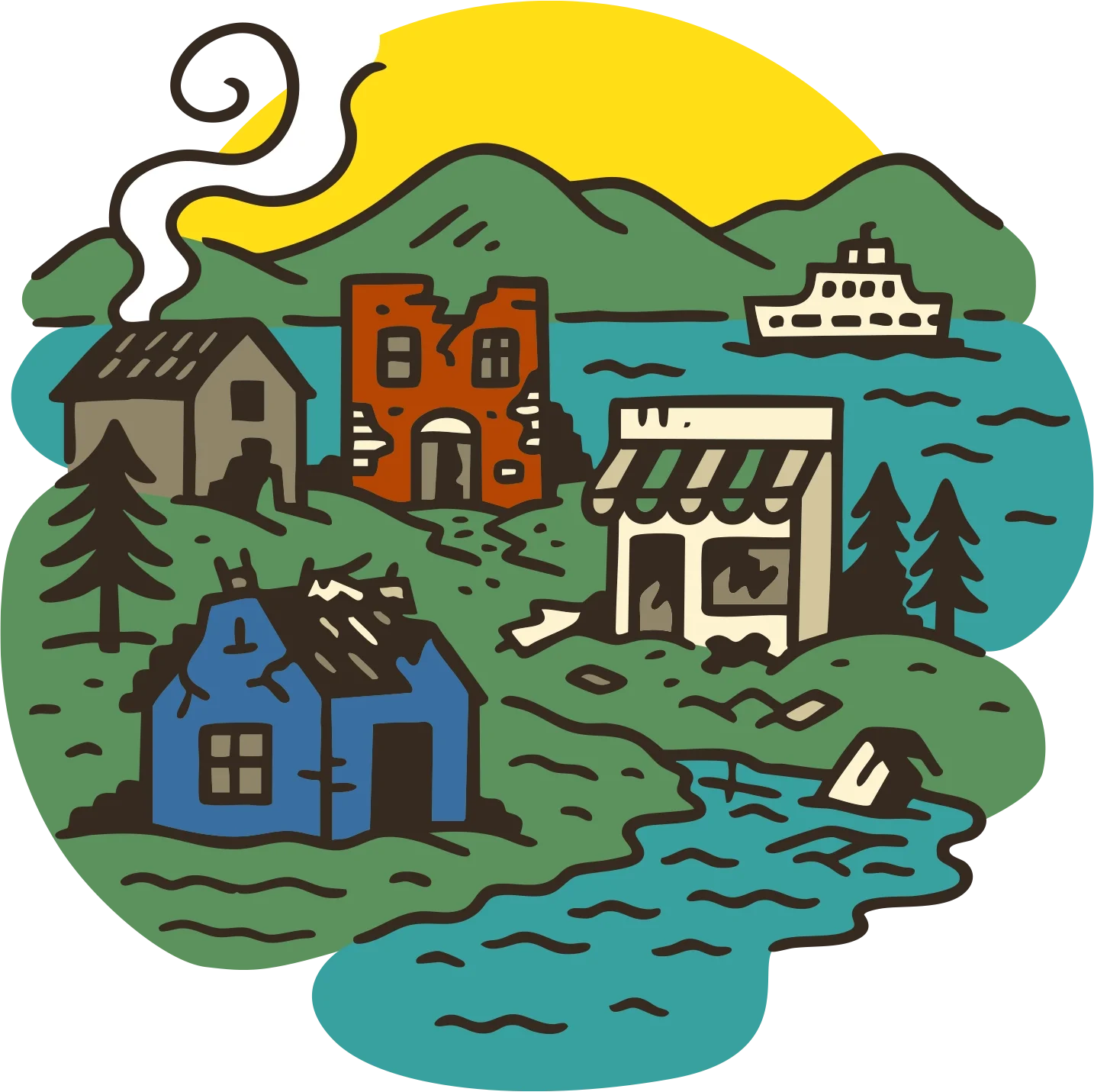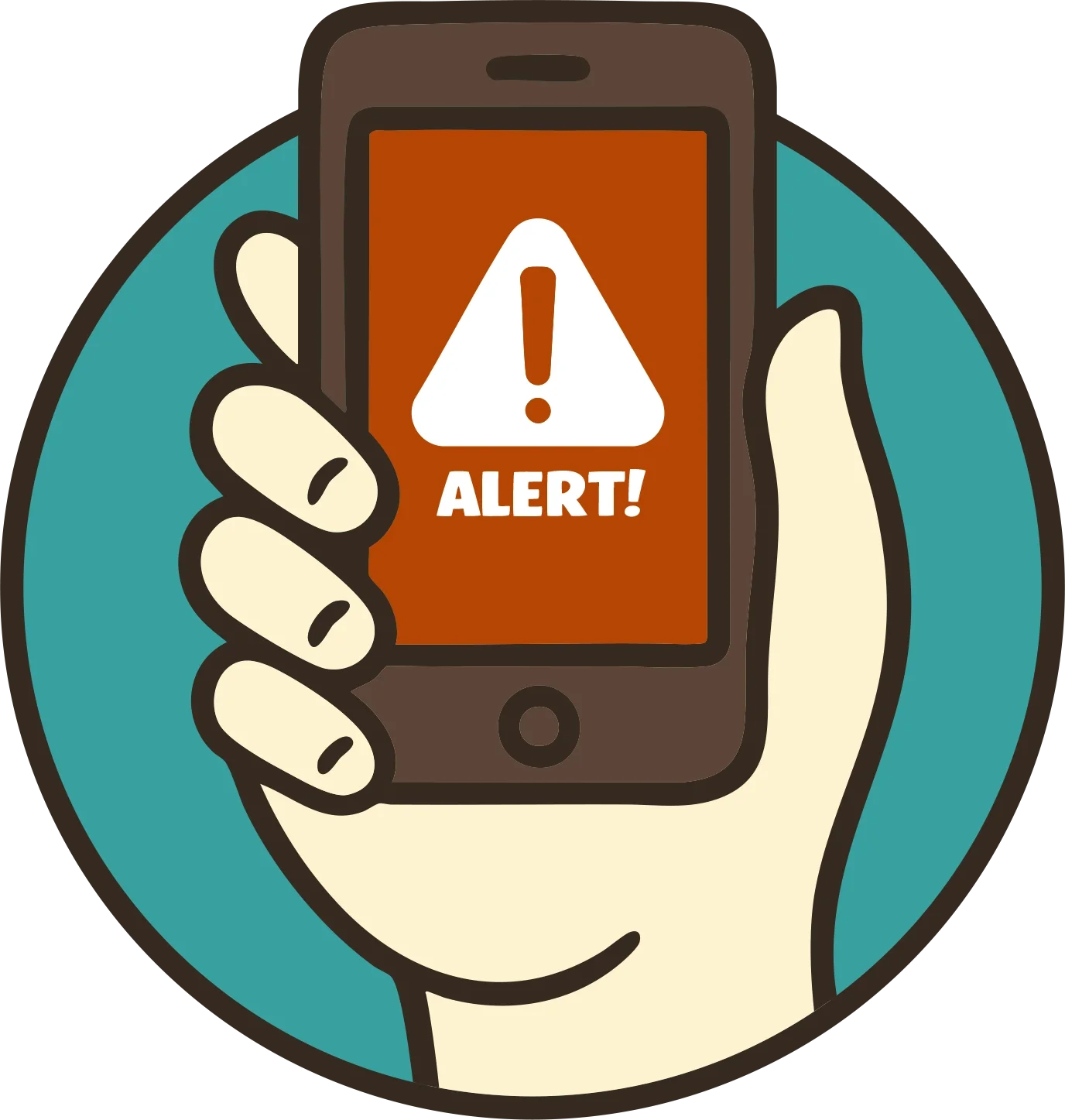PREPAREDNESS IS THE ISLAND WAY
From winter storms to earthquakes, living in the San Juan Islands means being prepared. That doesn’t mean panic or living in fear—it means making a plan, knowing your neighbors, and being ready to go it alone if needed.
Keep it simple, start today.
Let’s get island ready
You can’t help others if you’re scrambling to take care of yourself or your family. That’s why we start with getting ready at home, then expand our preparedness efforts into the community from there.
Get your house in order. Get your neighbors talking. Then help the community organizations you depend on—schools, churches, water providers, non-profits— get ready too.
1. Get Your Household Ready
Being ready doesn’t mean building a bunker or spending a fortune. It can be incremental and the most important thing is just to start. It means having at least two weeks of food, water, and basic supplies on hand—just in case ferries are down or help is slow to arrive. Think of it as peace of mind for your future self. It’s easier than it sounds, and you probably already have a head start.
2. Connect with Your Neighbors
When something big happens, neighbors are your first line of support. A simple conversation ahead of time can save a lot of confusion later. Find out who’s around, what resources you each have, what specific vulnerabilities your neighborhood might face, and pick a designated meeting spot so you can check in with each other. This does not need to be complicated or time consuming. Keeping it simple and sustainable is AOK!
3. Help Your Community Prepare
Schools, clinics, nonprofits, and local businesses all keep the islands running. Whether you work there, volunteer, or just notice something missing, you can help get the conversation started. A basic plan goes a long way toward keeping services going when they're needed most.
Island Risks
Disasters may look different on the islands. Ferries stop running. Utility connections to the mainland are fragile. Help may take days to arrive. Learn more about the scenarios most likely to affect our remote community. Each one has its own challenges—and its own game plan.
Learn what to expect and how to prepare.
Earthquakes &
Tsunamis
Earthquakes are a fact of life in the PNW and are the greatest challenge we face. Power, communications, ferries, water, sewer, and supplies of food and fuel may be disrupted for weeks or months.
Winter Storms
Frequent high winds and occasional snow storms and deep freezes are a part of winter in the islands and can knock out power, block roads, and isolate communities. Make sure you—and your neighborhood—can ride it out.
Oil Spills
A spill could affect drinking water, beaches, wildlife, air quality, and have major impacts on local economy and well being. Learn what to watch for and what to do if it happens.
Health Crisis
Pandemics, smoke events, and contaminated water supplies are just a handful of local challenges the islands have faced. Know how to stay informed, reduce risk, and support each other.
Wildland Fires
While fire risk in the islands is relatively low most of the time, there can be periods of very high danger. Preparation starts with the area right around your home.
What happens after?
After a major disaster, things won’t return to normal right away. Roads may be blocked. Communications may be down. Services will be limited. Understanding how recovery works on the islands helps you plan ahead and stay useful in the days that follow. Most of all, staying engaged, positive, and focused on supporting the islands is the best approach.
Sign Up for Emergency Alerts
Stay in the loop when something serious happens. Signing up takes two minutes, and you’ll only get messages that really matter!


